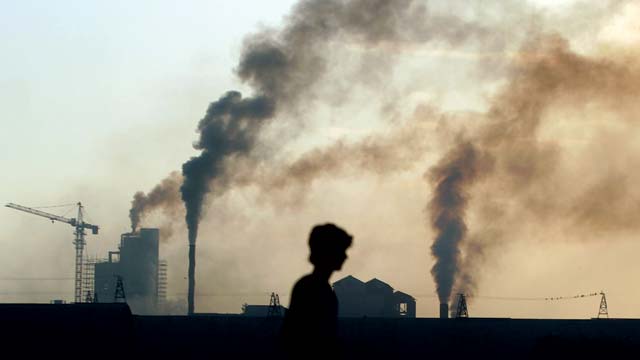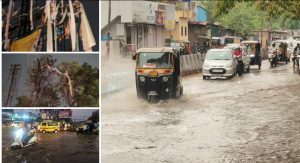Pune: SAFAR’s Air Quality Forecasting Framework Gets Global Nod

Pune, 22nd September 2021: The first official indigenous framework to forecast the quality of air in Delhi, Mumbai, Pune and Ahmedabad four megacities in India as mandated under the National Clean Air Programme (NCAP) plan by the System of Air Quality and Weather Forecasting And Research (SAFAR) has been accepted internationally. This could prove to be a significant boost for air quality forecasting across the country.
Findings of this framework developed under the Union Earth Sciences Ministry, meant for citizens, decision-makers and researchers, were published in peer-reviewed international Elsevier Journal “Environmental Modelling and Software” on Tuesday, September 22, 2021. The research paper titled “India’s maiden air quality forecasting framework for megacities of divergent environments: The SAFAR-project” was led by the Indian Institute of Tropical Meteorology (IITM-Pune) in association with the India Meteorological Department and Utkal University, Bhubaneshwar.
According to SAFAR’s founder project director Dr Gufran Beig, the SAFAR framework is a one-stop solution for air quality management leading up to mitigation, and also helps formulate micro specific air action plans based on robust science. “SAFAR’s forecasting model is comparable to the framework by the United States Environmental Protection Agency (US-EPA),” he said.
Air pollutant forecasting is an important part of the air quality early warning framework reported in this work for Indian megacities of vivid micro-environments. “But the chaotic nature and complexity of air pollution itself make prediction a challenging task, particularly in a city which is highly influenced by meteorology due to its geographical location which is considered in this work,” said Dr Beig.
EASY TO REPLICATE ACROSS ALL NON-ATTAINMENT CITIES
India currently has 132 non-attainment/million-plus cities under its NCAP program which seeks to achieve a 20% to 30% reduction in Particulate Matter (PM) concentrations by 2024 keeping 2017 as the base year. Non-attainment cities are those that do not meet the prescribed air quality standards set by the Union environment ministry. Air pollution is likely to reduce the life expectancy of about 40% of Indian citizens by more than nine years, a recent report – Air Quality Life Index (AQLI) 2019 – released by the Energy Policy Institute at the University of Chicago (EPIC) said.
SAFAR chose to demonstrate its forecasting model in four different and contrasting micro-climates of Indian cities – Delhi, Mumbai, Pune and Ahmedabad. “The prototype can be scaled up to the remaining 128 non-attainment cities of India as per the commitment to NCAP,” said Dr Beig.
The Union Environment Ministry’s NCAP action points emphasised the necessity for an Indian city forecasting framework, which was to be addressed by the Ministry of Earth Sciences’ SAFAR project.
AIR POLLUTION INVENTORY FOR FOUR CITIES
According to the research analysis in the peer-reviewed journal, estimated total emissions of PM2.5 from all sources across megacities were calculated as 77 gigagrams per year (Gg/Yr) for Delhi, 57 Gg/Yr for Ahmedabad, 45 Gg/Yr for Mumbai and 30 Gg/Yr for the geographical regions Pune metropolis.
“High population density due to urbanization is the main reason which directly or indirectly drives the PM2.5 emissions in all four metropolises,” said Dr Beig.
The most dominating emission source of PM2.5 is transportation whose share is found to be 41% in Delhi followed by 40% in Pune, 35% in Ahmedabad and 31% in Mumbai.
The uncontrolled combustion pattern in the highly dense slum population is significantly high in Mumbai. The share of biofuel emissions is highest in Mumbai (15.5%) followed by Pune (11.4%), Ahmedabad (10.2%) and Delhi (3%).
A large number of PM2.5 hotspots are well scattered and can be identified in all cities due to the presence of industries. Industrial emissions mainly consist of emissions that were found to be highest in Mumbai (31.1%), (21.6%) in Pune, followed by Ahmedabad (18.8%) and Delhi (18.6%).
THE FORECASTING FRAMEWORK
Modern communication tactics are being adapted to ensure the distribution of data in an understandable style. Six separate components make up the SAFAR framework including Observational Network for Air Pollution and Weather Parameters, Quality Control and Quality Assurance, Inventory of Emissions: To keep track of pollution sources, SAFAR-Air Quality and Weather Forecasting Model, Data to Information Translation: The AQI Concept, & Technology and Outreach for Product Development and Dissemination.
“SAFAR uses round-the-clock air quality and weather parameter measurements, scientific analysis to improve forecasting capabilities with basic research, which can be disseminated to as many stakeholders as possible, including government agencies, educational institutes, and the general public, to ensure maximum understanding,” said Dr Beig.
HOW WILL THIS FORECASTING MODEL HELP
According to Dr Beig, such a framework is developed by a few developed countries and was non-existent in the developing world.
“Now that India has championed the capability to develop its air quality framework whose capability is proven beyond doubt, we need to take its advantage to become self-sufficient in replicating in other cities as originally envisaged in the NCAP plan document rather than borrowing foreign framework with a cost. SAFAR requires it to be upscaled as per the NCAP plan,” he said.
Explaining how this forecasting could benefit people Dr Beig said, “Using this forecasting model all Urban Local Bodies (ULB) can also issue timely health advisories publicly, to alert citizens on ‘bad air’ days, which will help save vulnerable groups from severe health impacts of air pollution.”
GRAPHICS

Share of different sources for PM2.5 and PM10 emissions (in %) along with total PM2.5 and PM10 emissions from all sources in Gg/year for Delhi, Ahmedabad, Mumbai & Pune – SAFAR cities considered in the Study.





